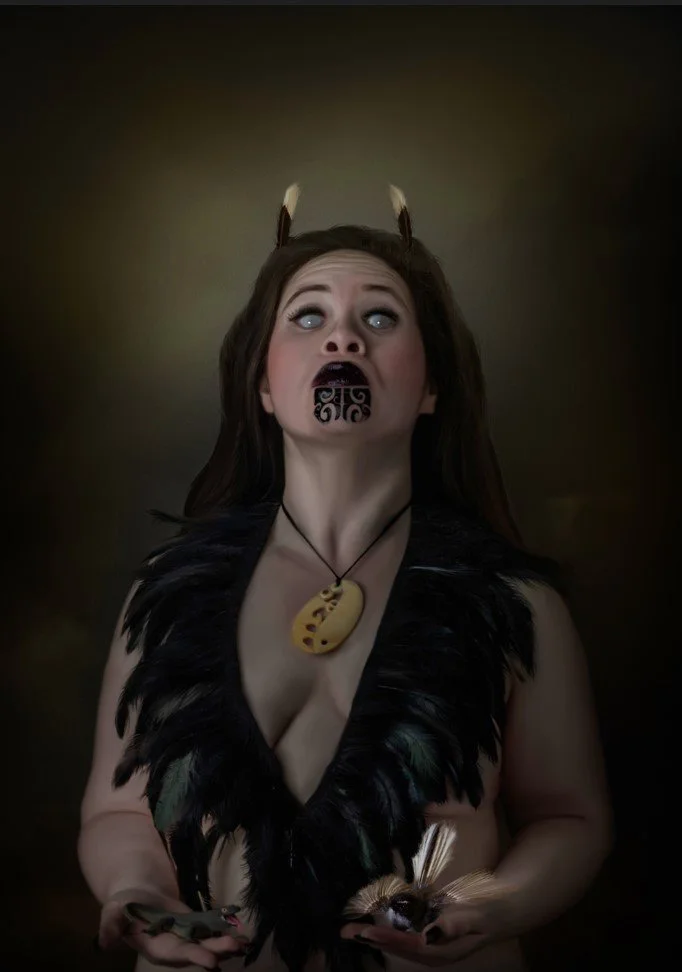Winner: Stevei Houkāmau, Kia Whakatōmuri te haere whakamua (Hinemaurea), Clay, paint, feathers, sealer, powder coated wire
20 September - 3 November 2024
First Floor Galleries
Touring Exhibition from New Zealand Portrait Gallery Te Pūkenga Whakaata
Welcome to the 2023 Kiingi Tuheitia Portraiture Award finalists’ exhibition. This Award encourages emerging Māori artists to create portraits of their tūpuna (ancestors) in any medium.
Developed in partnership with the Office of the Kiingitanga the Award takes place every two years and the exhibition travels the country.
This exhibition showcases the 44 artworks that were shortlisted by our esteemed judges Steve Gibbs (Ngāi Tāmanuhiri, Rongowhakaata, Rongomaiwahine, Graham Hoete aka “Mr G” (Ngati Awa, Ngai Te Rangi, Ngati Ranginui), Lisa Reihana (Ngā Puhi, Ngāti Hine, Ngāi Tūteauru, Ngāi Tupoto).
The winning artist receives $20,000 and the Second Prize winner receive $2,500. Visitors were invited to have their say on which is their favourite artwork by voting in the Forsyth Barr People’s Choice Award. The artist who won this also received $2,500.
This exhibition was originally held at the New Zealand Portrait Gallery Te Pūkenga Whakaata from May - August, 2023.
Nau mai ki Ngaa Tohu Tauwhaaiti o Te Whakaaturanga Kiriaahua o Kiingi Tuheitia 2023. He whakataetae te tohu nei hei akiaki i ngaa ringaa toi e puea ana ki te whakaatu i too raatou anoo tupuna, ahakoa te momo taonga hangahanga.
I mahi tahi ki Te Tari o te Kiingitanga, ka tuu te whakataetae nei ia rua tau, aa, ka haereere te whakaaturanga puta i te Motu.
E whakatairanga ana te whakaaturanga nei i ngaa mahi toi e 44 i whakawhaaititia e te pae whakawaa rangatira, ko Steve Gibbs (noo Ngaai Taamanuhiri, Rongowhakaata, Rongomaiwahine); ko Graham Hoete, araa, ko ‘Mr G’ (noo Ngaati Awa, Ngaai Te Rangi, Ngaati Ranginui); ko Lisa Reihana (Ngaa Puhi, Ngaati Hine, Ngaai Tuuteauru, Ngaai Tupoto).
Ka whakawhiwhia te ringa toi toa ki te $20,000, aa, ka whakawhiwhia ki te ringa toi tuarua te $2,500. Ka poowhiritia hoki ngaa manuwhiri ki te aata tohu i te toi e kooingo ana ki a raatou maa te pooti i Koowhiringa Marea naa Forsyth Barr. Ka whakawhiwhia te toa o teenei ki te $2,500.
The Arts House Trust and the New Zealand Portrait Gallery Te Pūkenga Whakaata acknowledges the passing of Kiingi Tuheitia Pootatau Te Wherowhero VII and celebrates the naming of Kuini Nga wai hono i te po Pootatau Te Wherowhero VIII as the new Māori Queen.
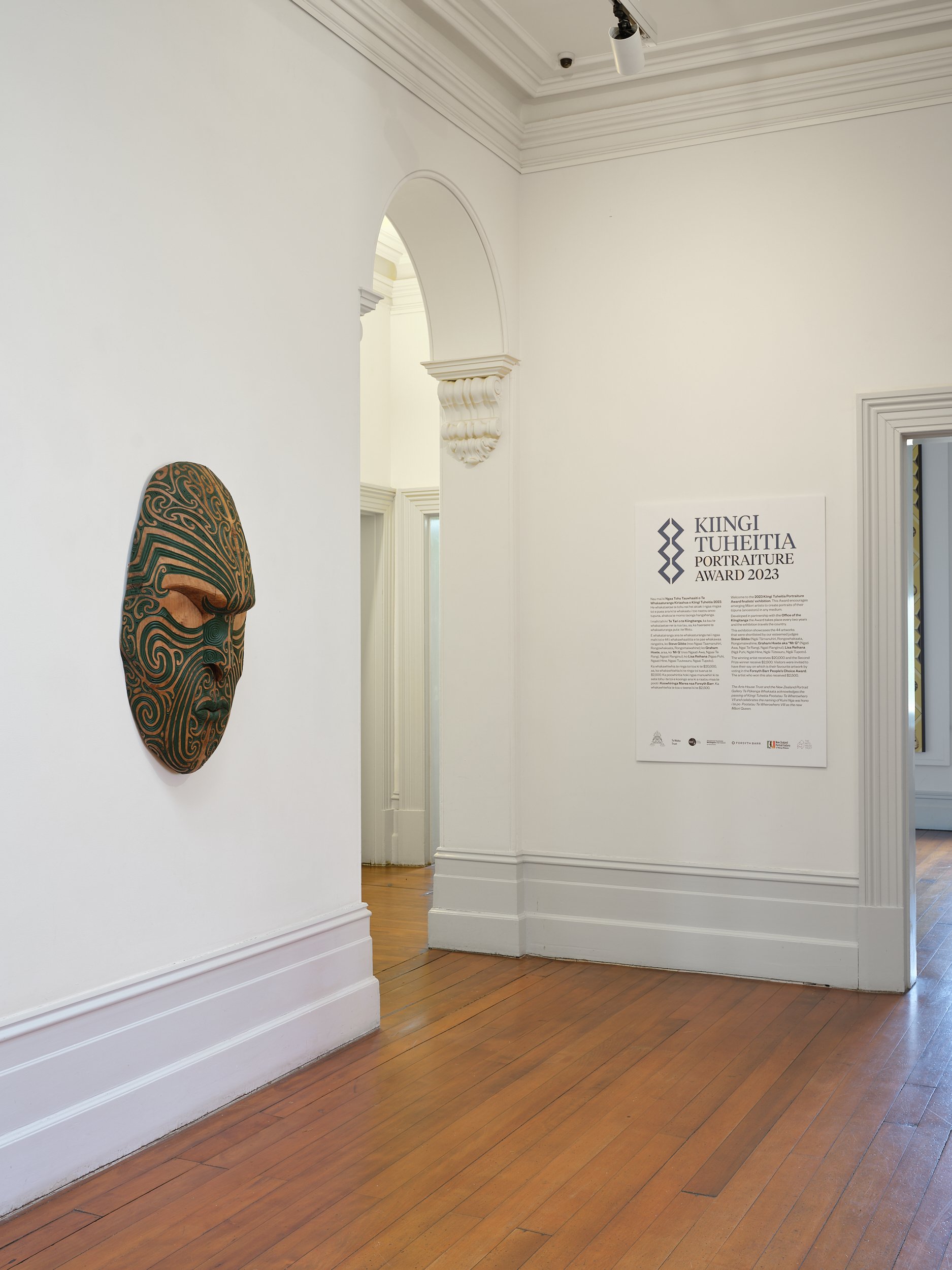
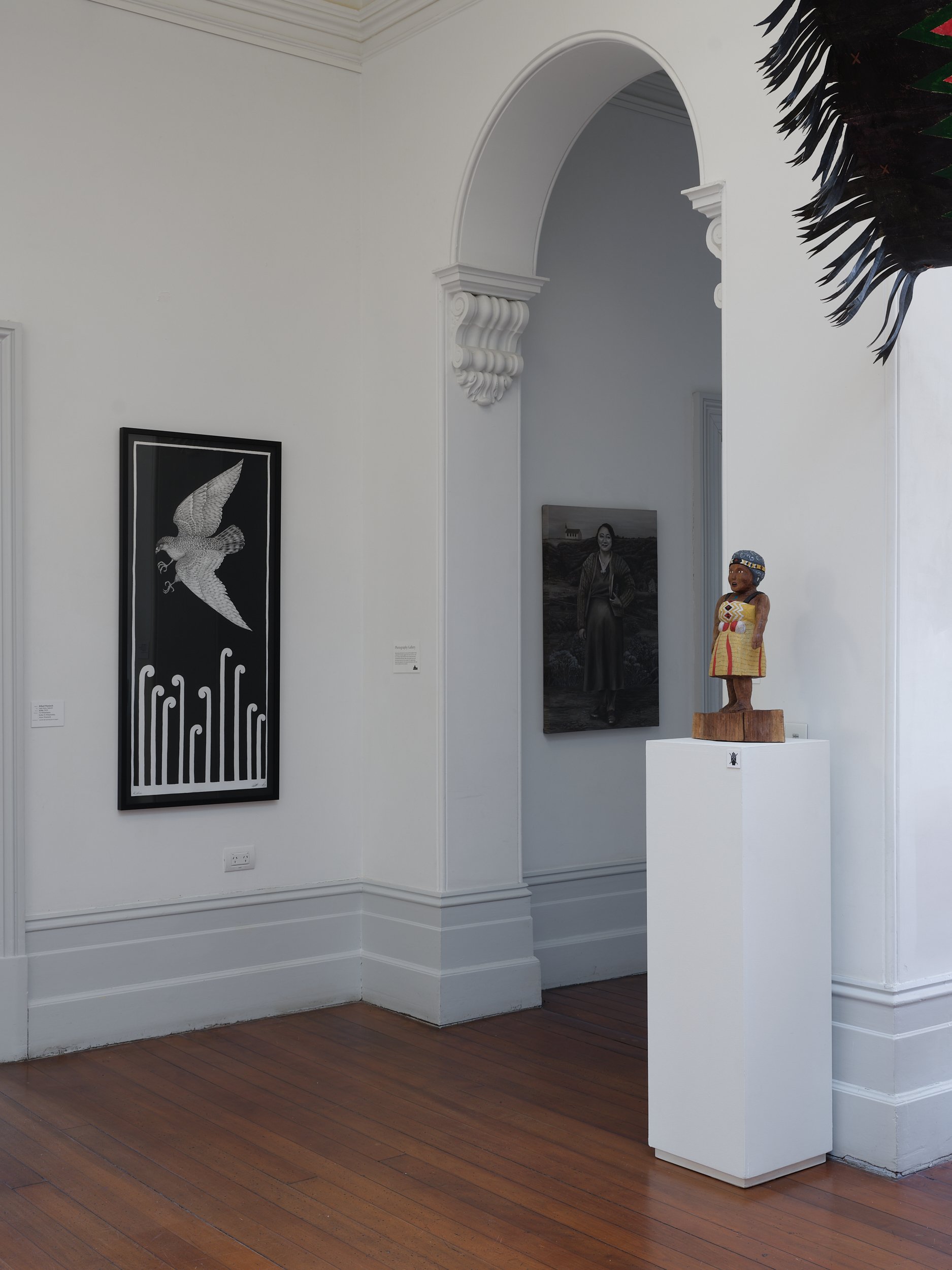
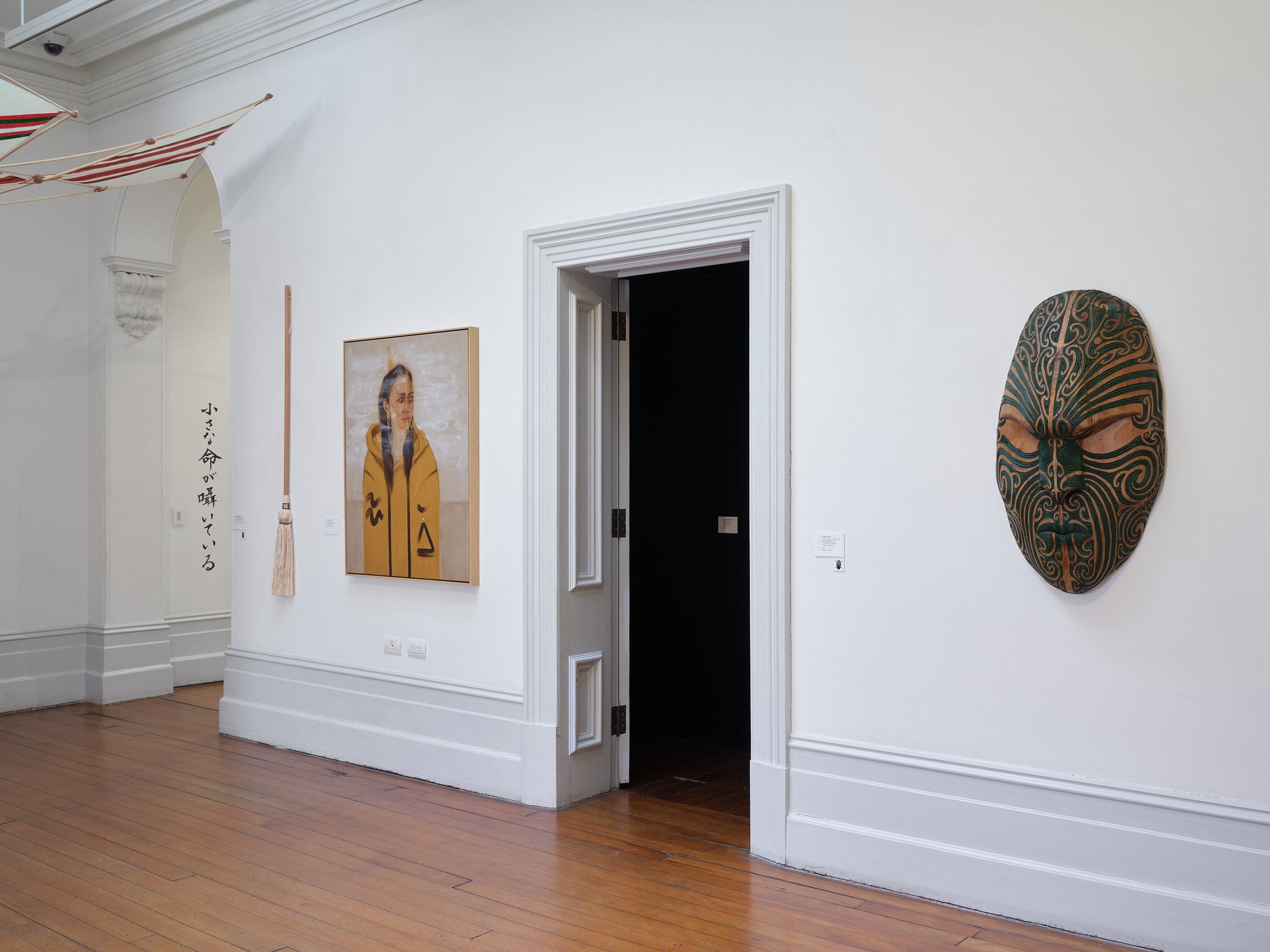

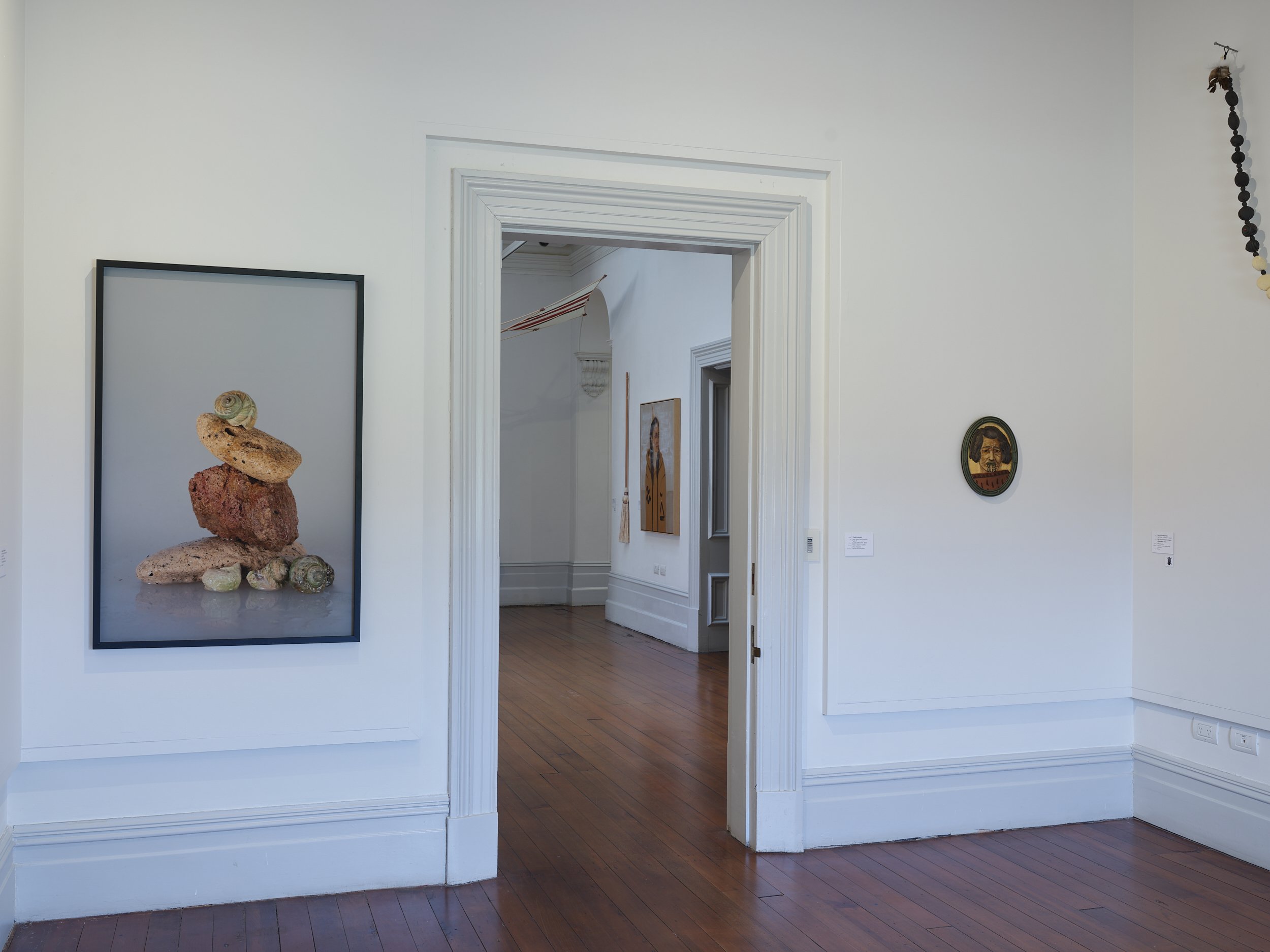
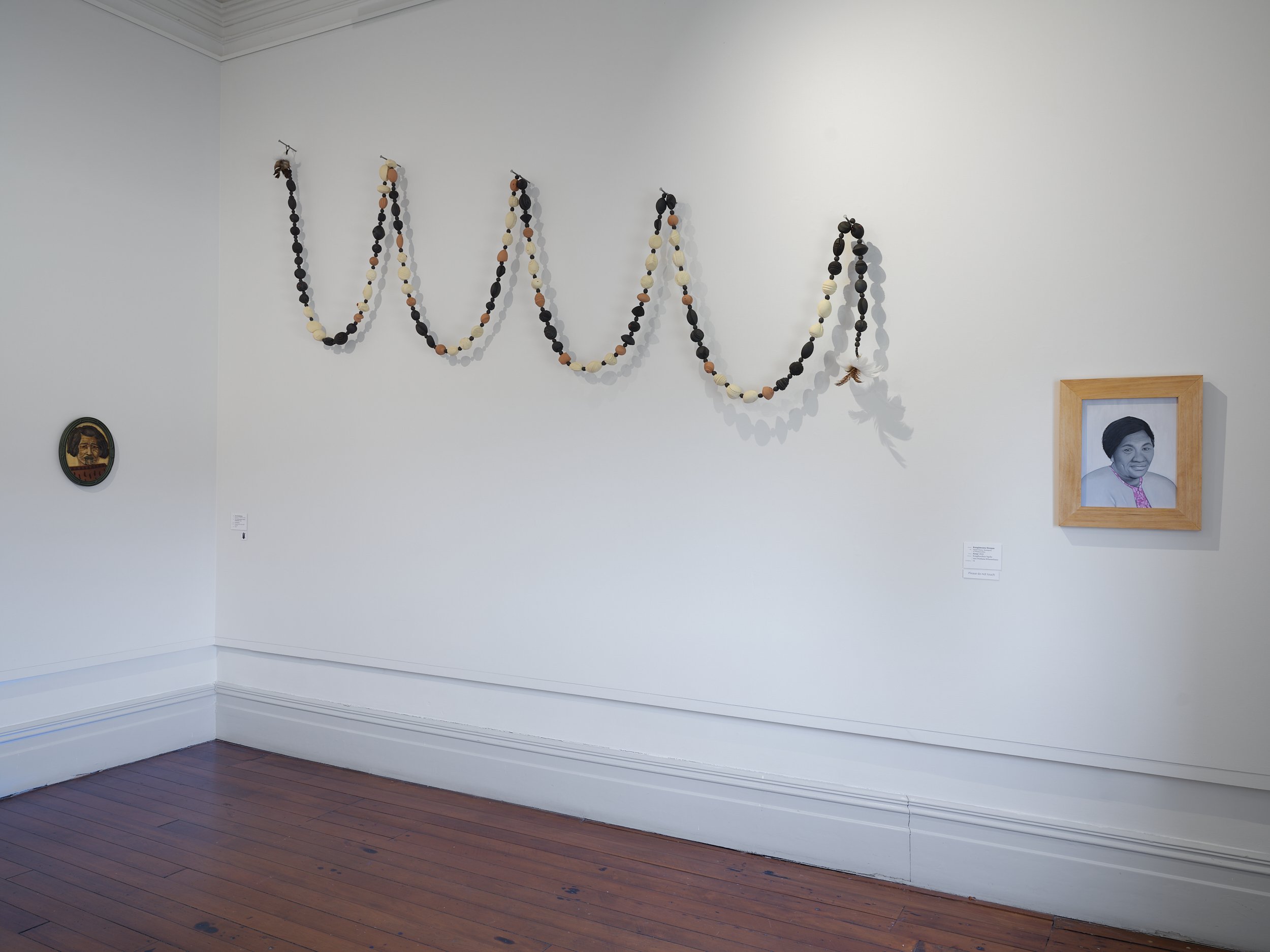
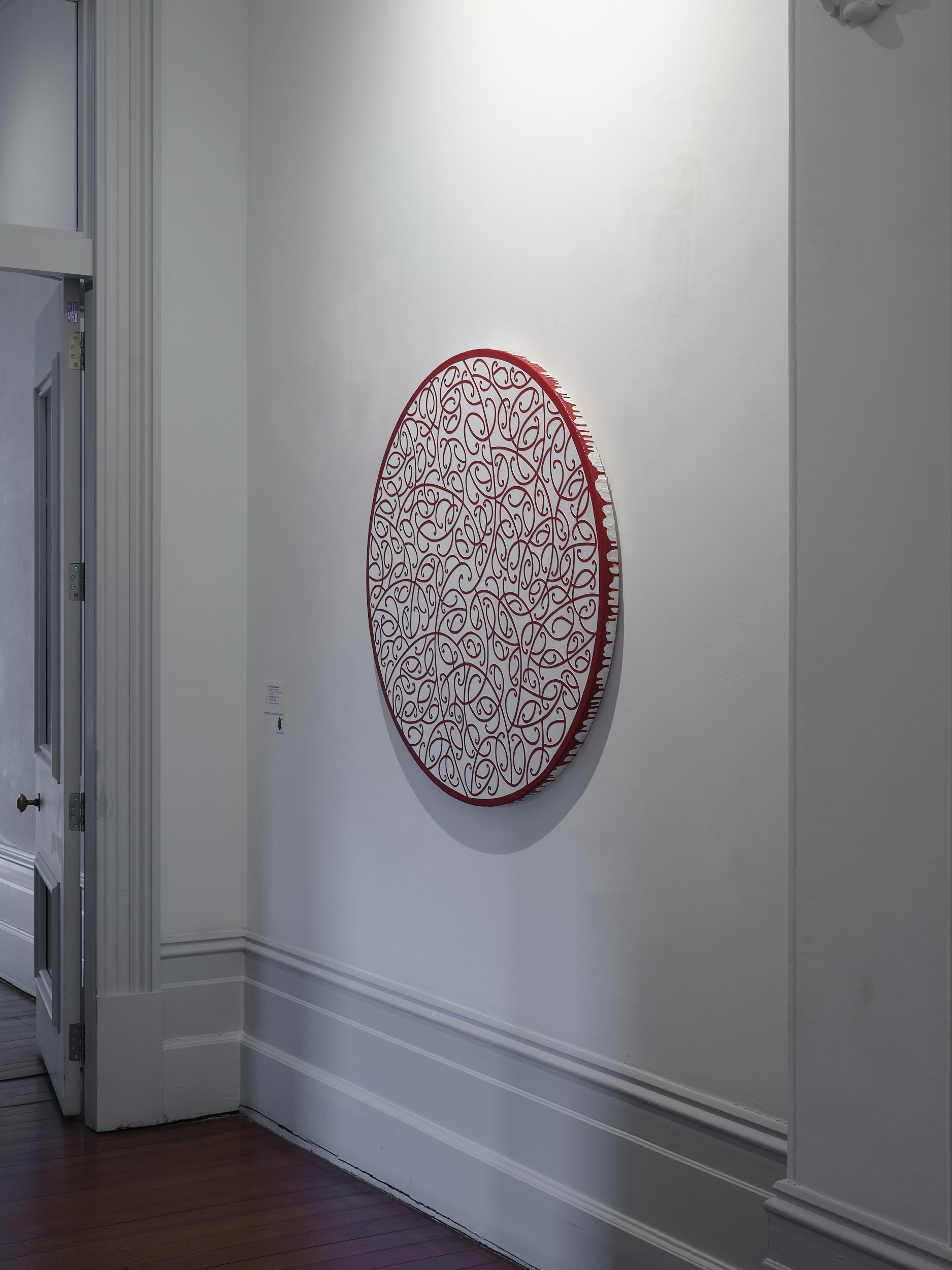
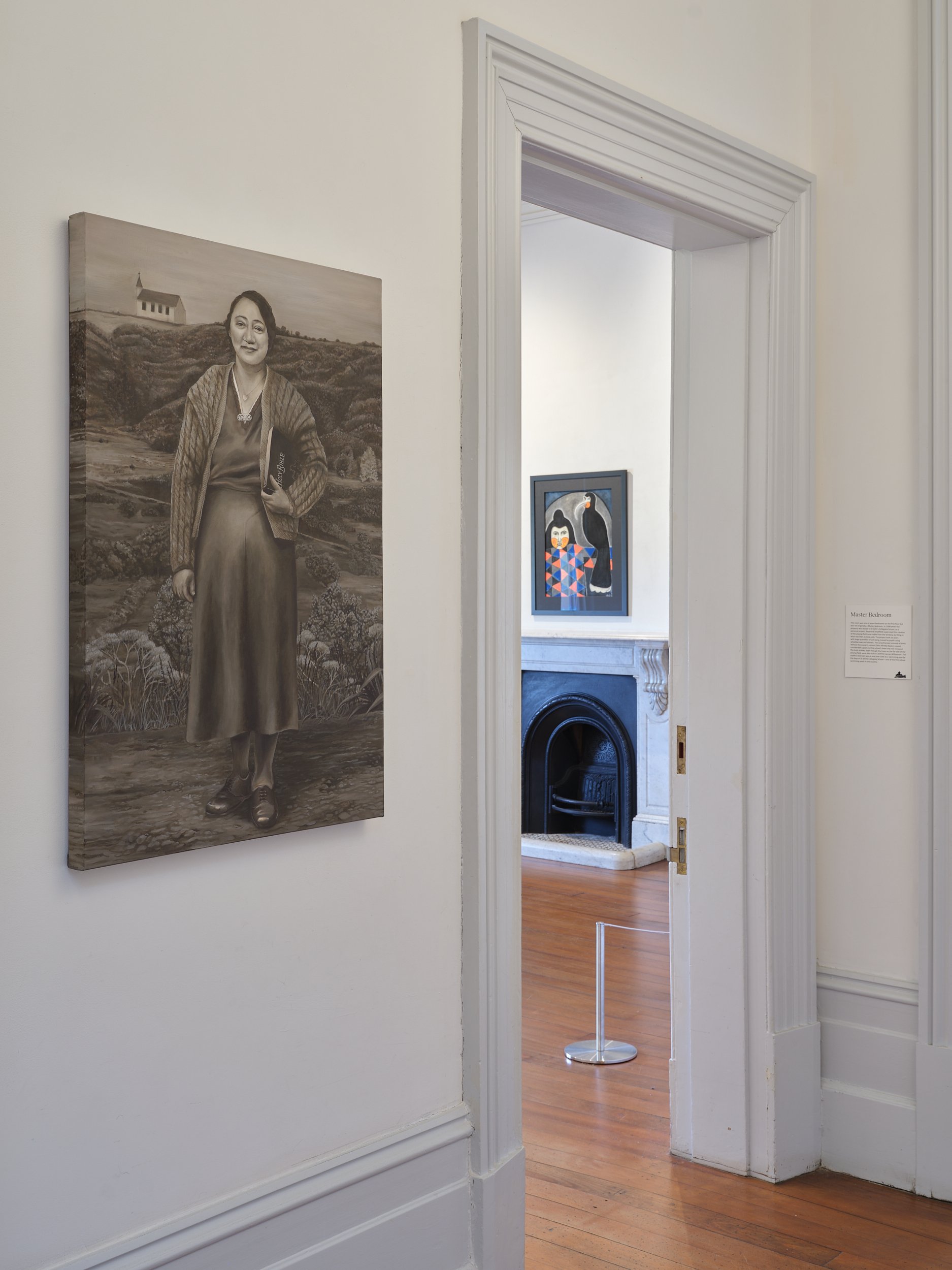
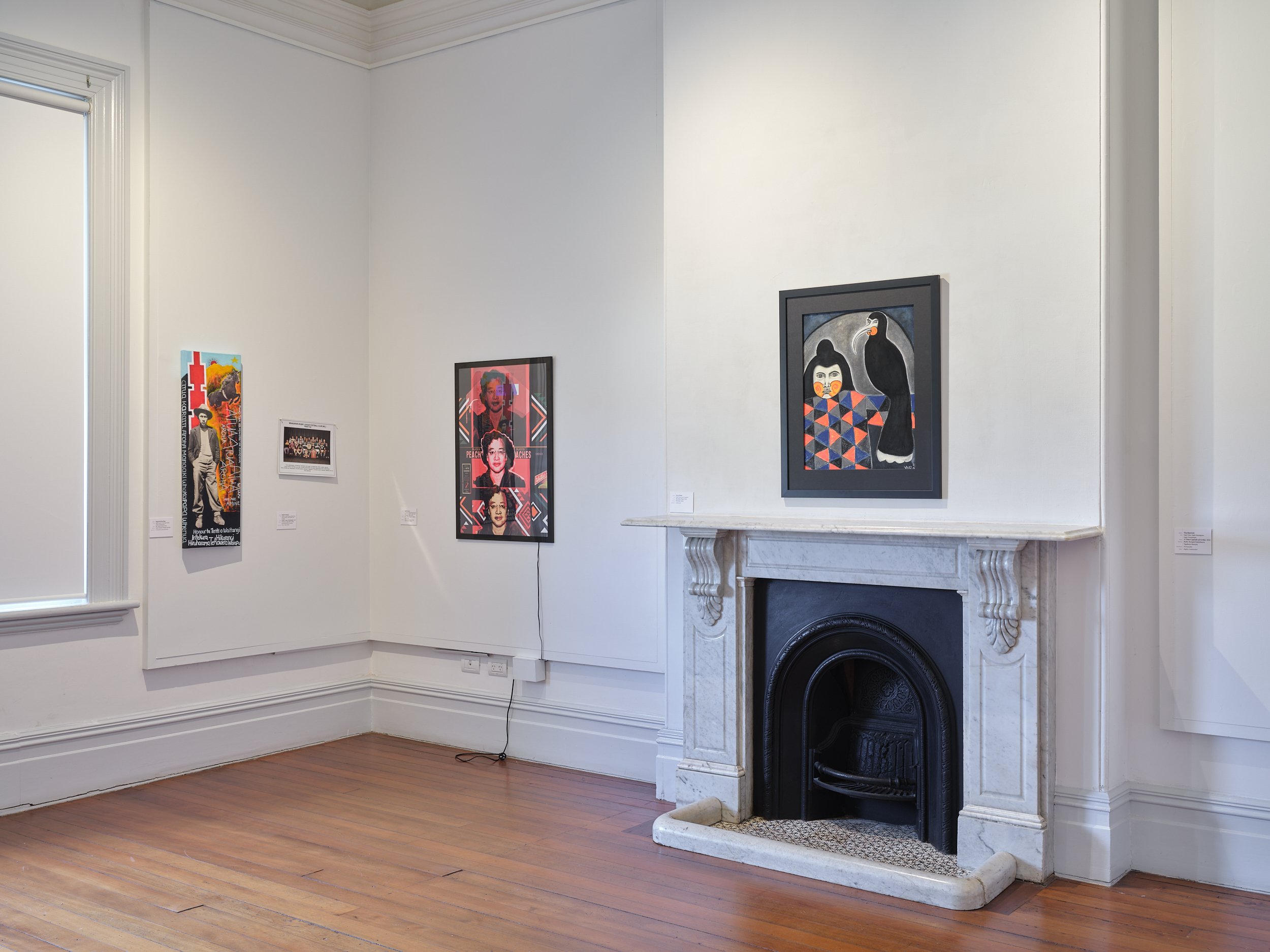
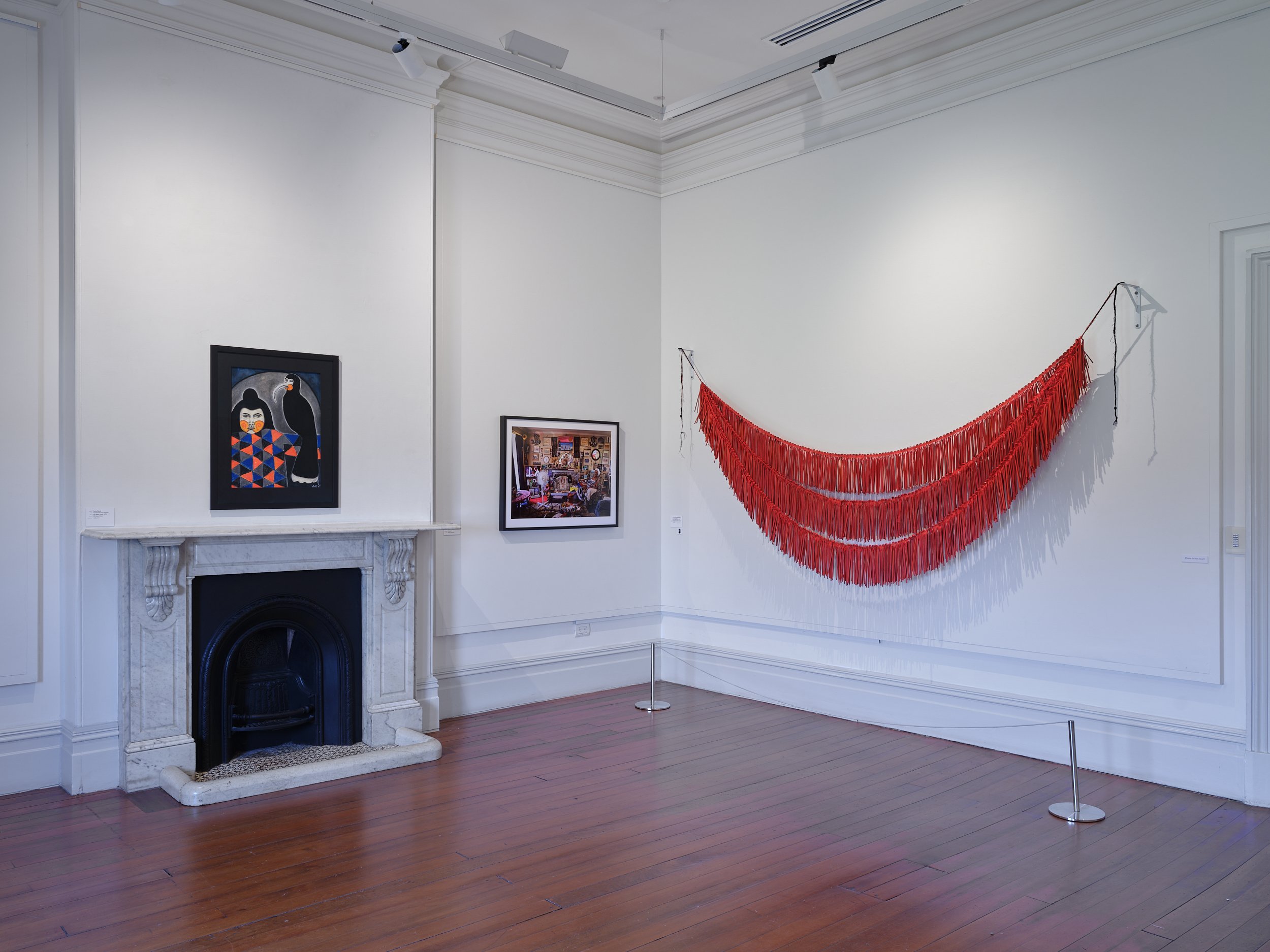
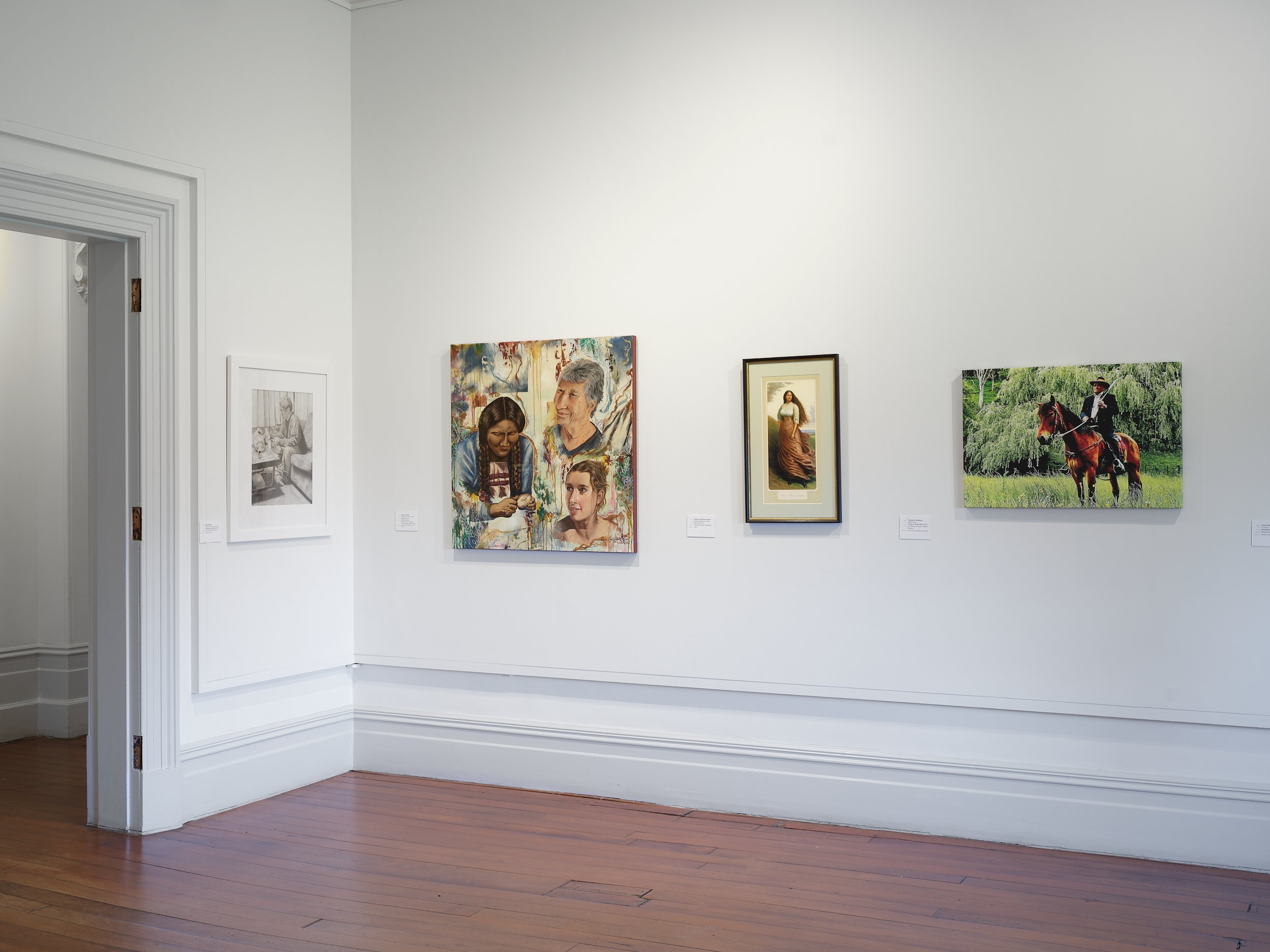
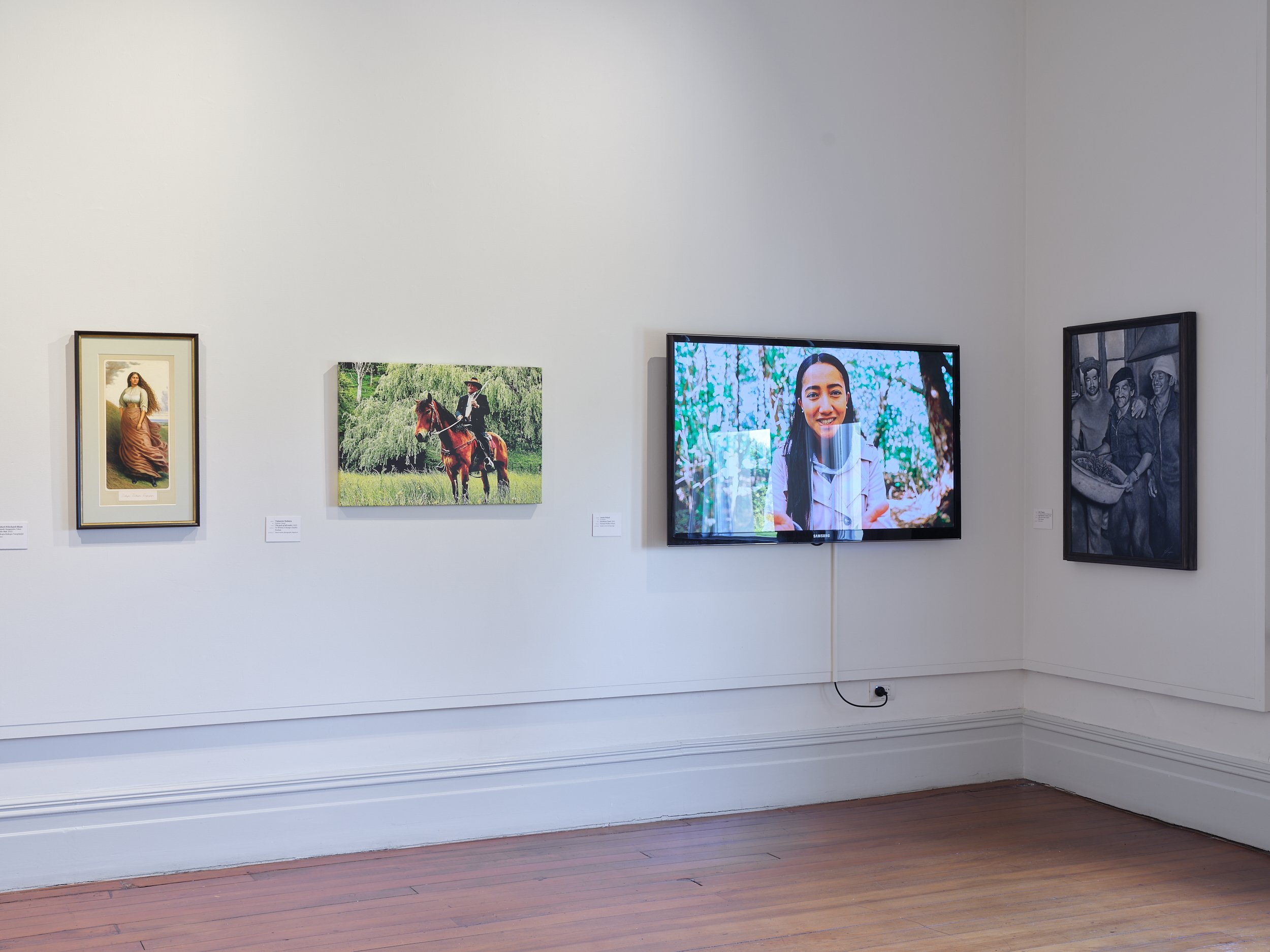
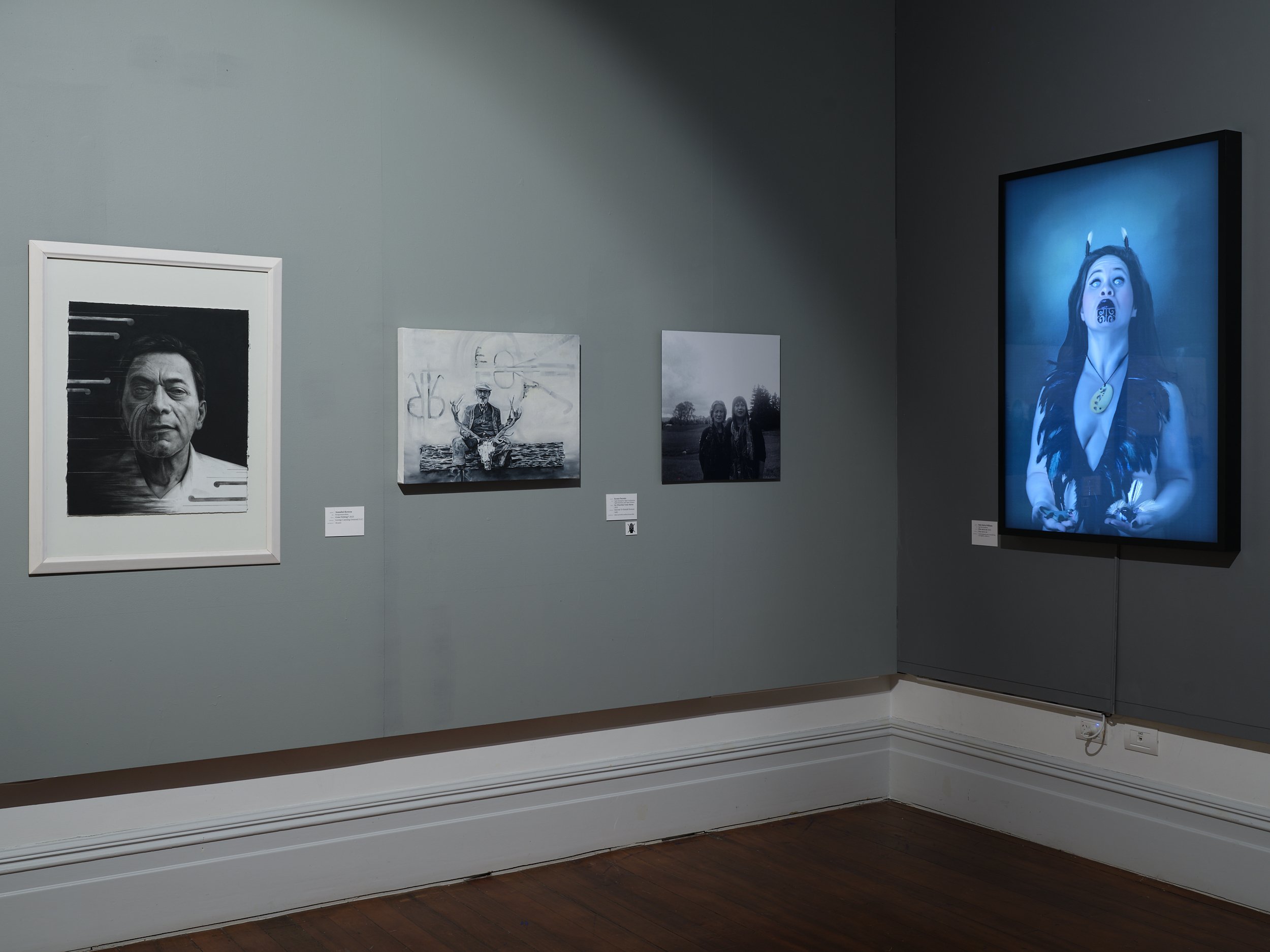
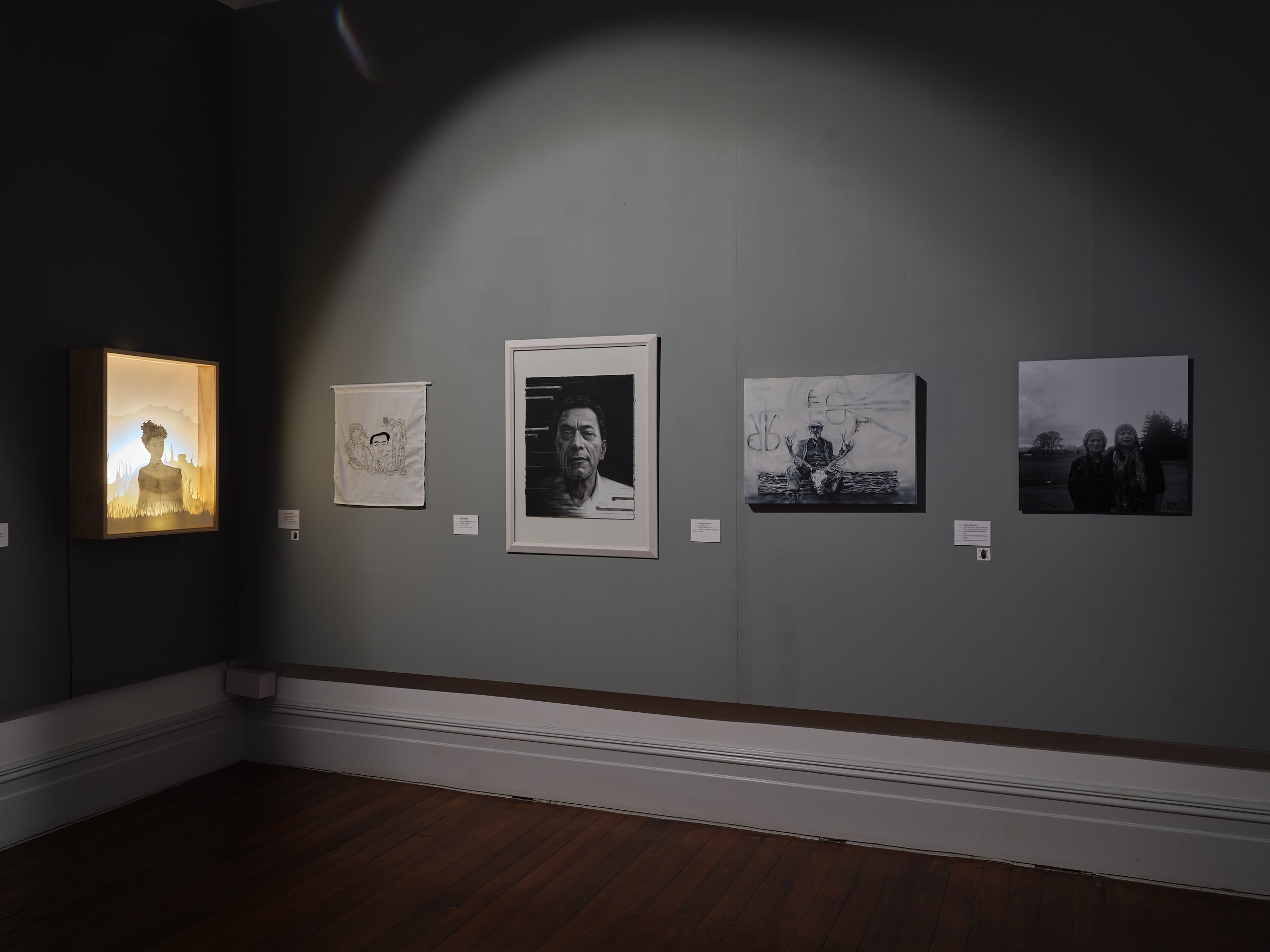
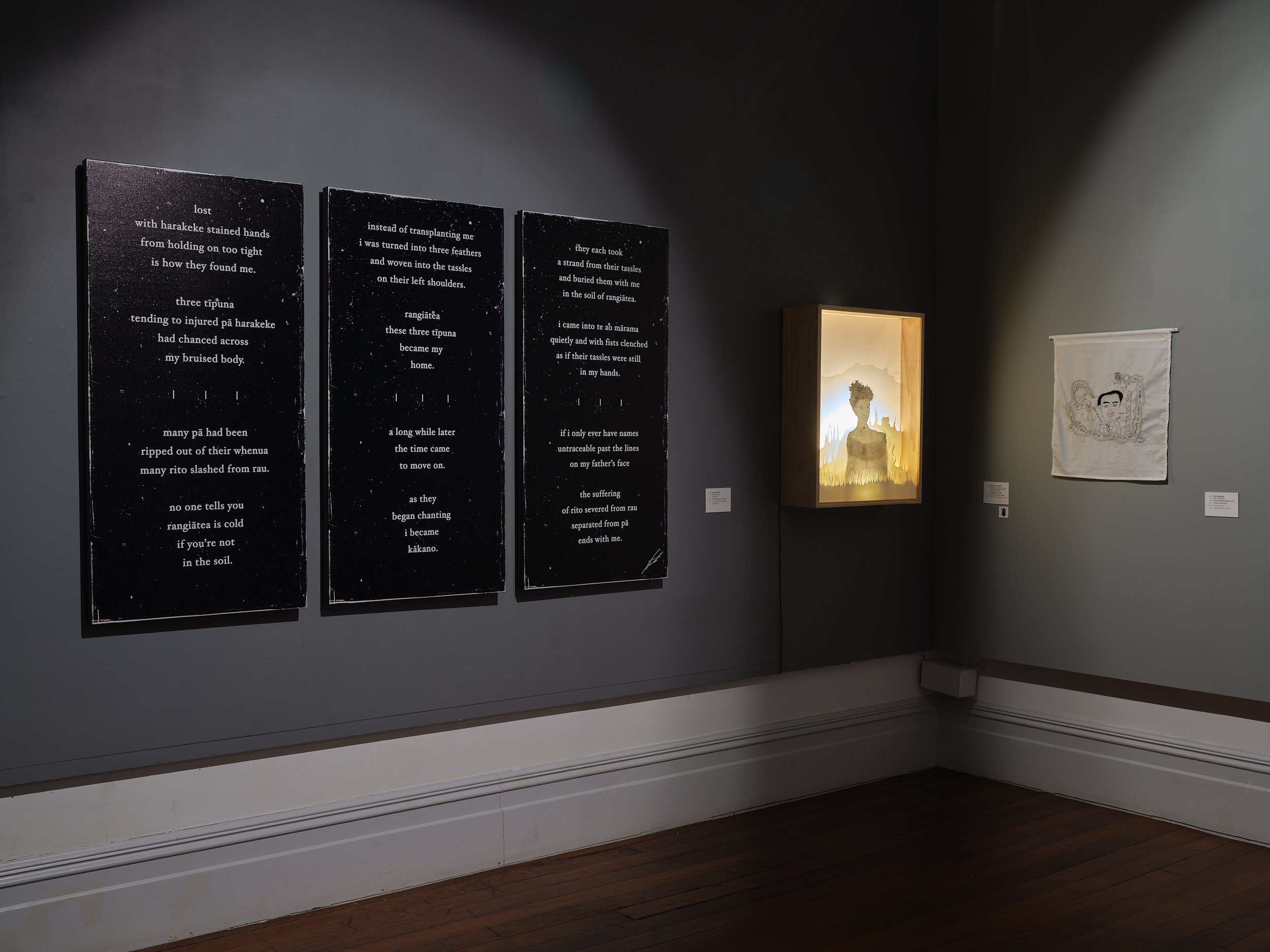
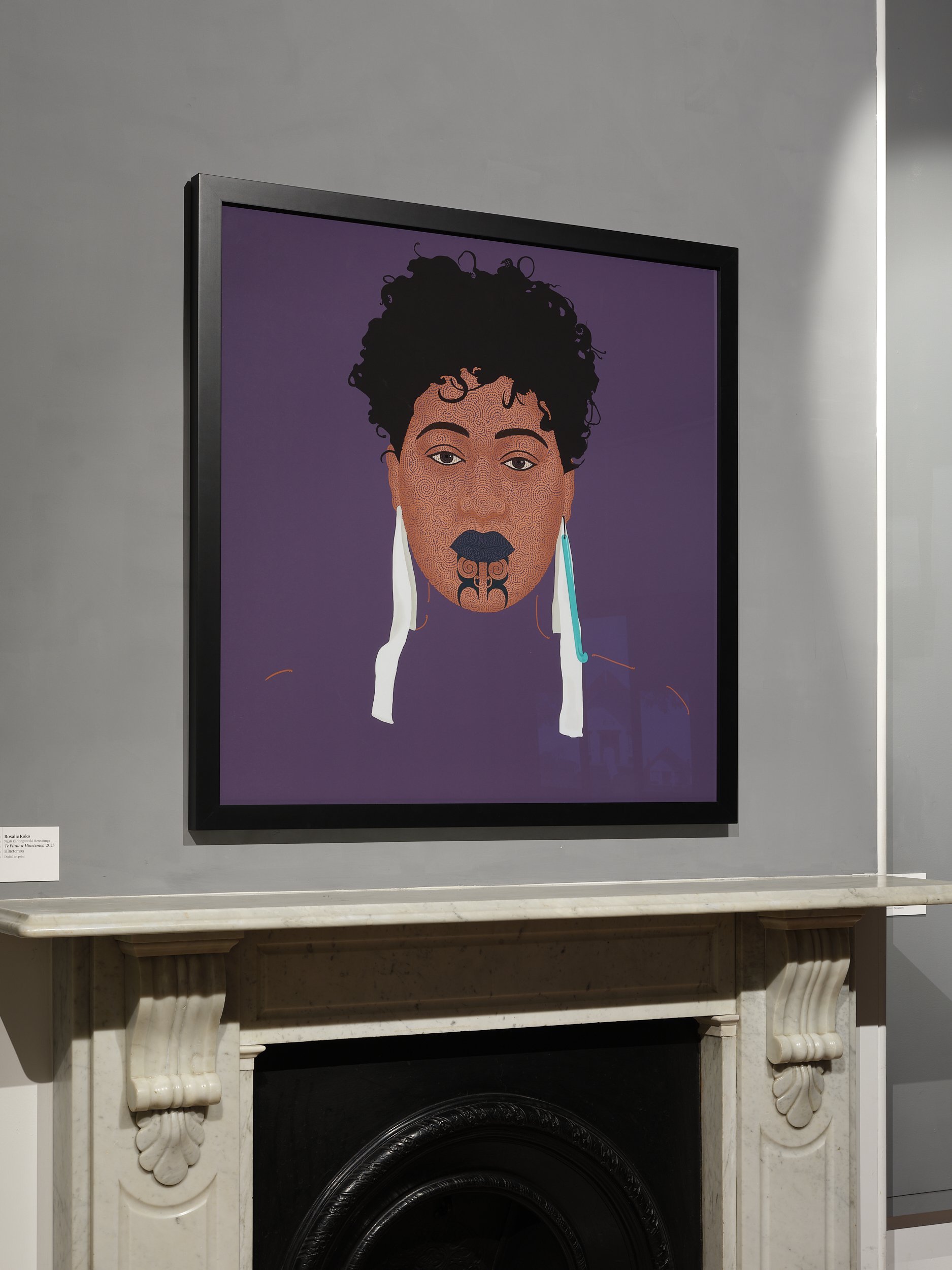
Photos by Sam Hartnett
Winner
Stevei Houkāmau
Kia Whakatōmuri te haere whakamua
(Hinemaurea)
Clay, paint, feathers, sealer, powder coated wire
“The title and tūāpapa (foundation) of Stevei Houkāmau’s work invokes the proverb “kia whakatōmuri te haere whakamua” which speaks of walking backwards into our future while keeping our eyes fixed on our past.
Created in honour of Hinemurea, this feminine work beautifully dances across the wall, reflecting the artists command of the chosen media. Reminiscent of a necklace of touch stones, each individual bead is incised with patterns and tohu (symbols) encoded with knowledge, and completed with a raukura (feather adornment) at each end.
The use of whatu raranga (finger weaving) to bind the work together reflects how the artist has considered whakapapa connections as an integral aspect. Masterful in its execution, this work can be installed in a multitude of ways, extending how it can be curated as a memory of tipuna.
This exquisite taonga mounga excited all the judges, who are thrilled that an uku (clay) artist receives the prestigious Kiingi Tuheitia Portraiture Award, 2023. ”— Judges' comments
“This work is a bold and masterfully crafted redefinition of what a ‘portrait’ is and can be. The Māori terms “whakaahua” and “ariā” are not limited to a mere exact depictions of the face but also focus on describing the “āhua ”or nature and personality traits of the person being portrayed, which in this case of Ming’s kuia, which has been portrayed powerfully and beautifully.
”Swept under the rug” is a surrealistic work full of resonant meanings, Ming utilises whatu raranga (finger weaving) to emulate a cotton broom. We are all familiar with the cleaning of marae at the conclusion of hui - everybody who has swept up the halls after a hui knows what this means: to be Kai Mahi. However, there is a political intention where the artist speaks of ‘sweeping past wrongs under the carpet’.
There is much aroha in this work for those that had to withhold their mother tongue and swallow their language. The whetu (stars) incorporated in the taniko weaving, is an assertion of an unbroken connection by the artist to her Nanny Heeni Jayne Ranginui. This work elevates a humble broom form into a taiaha - a weapon, and a site of protest. ”
— Judges' comments






